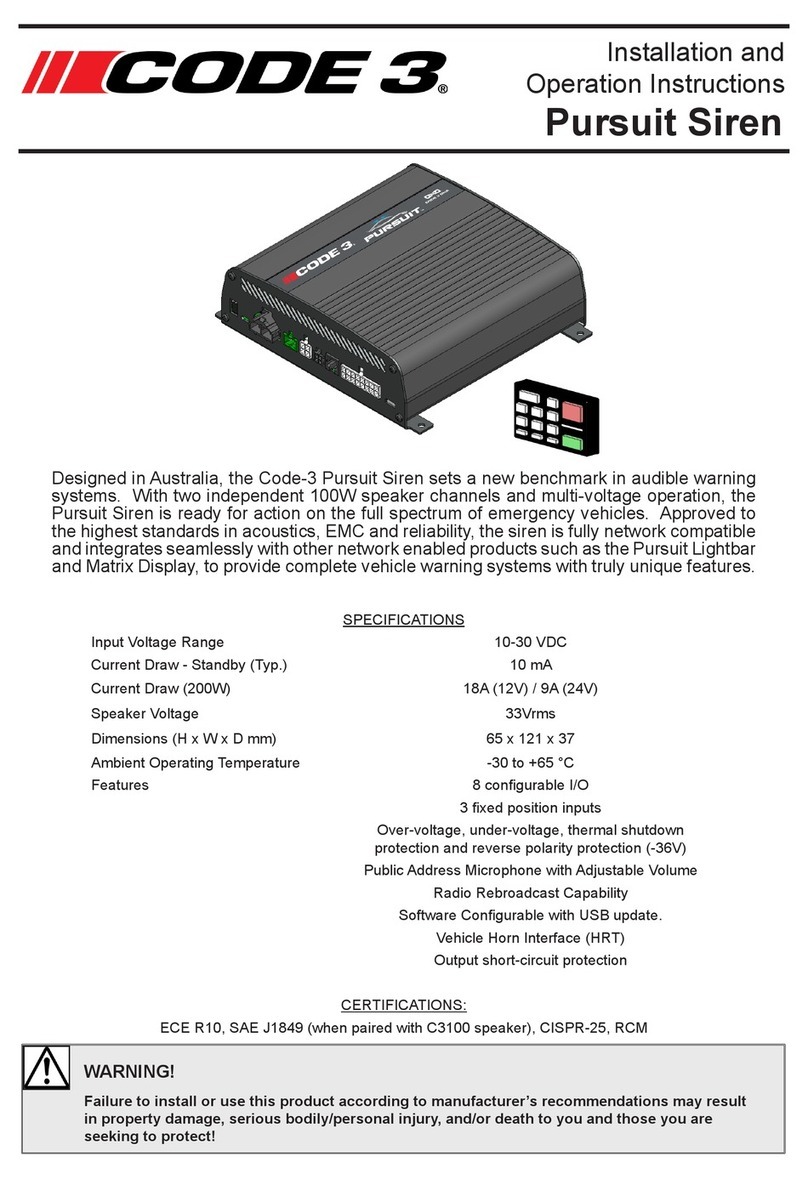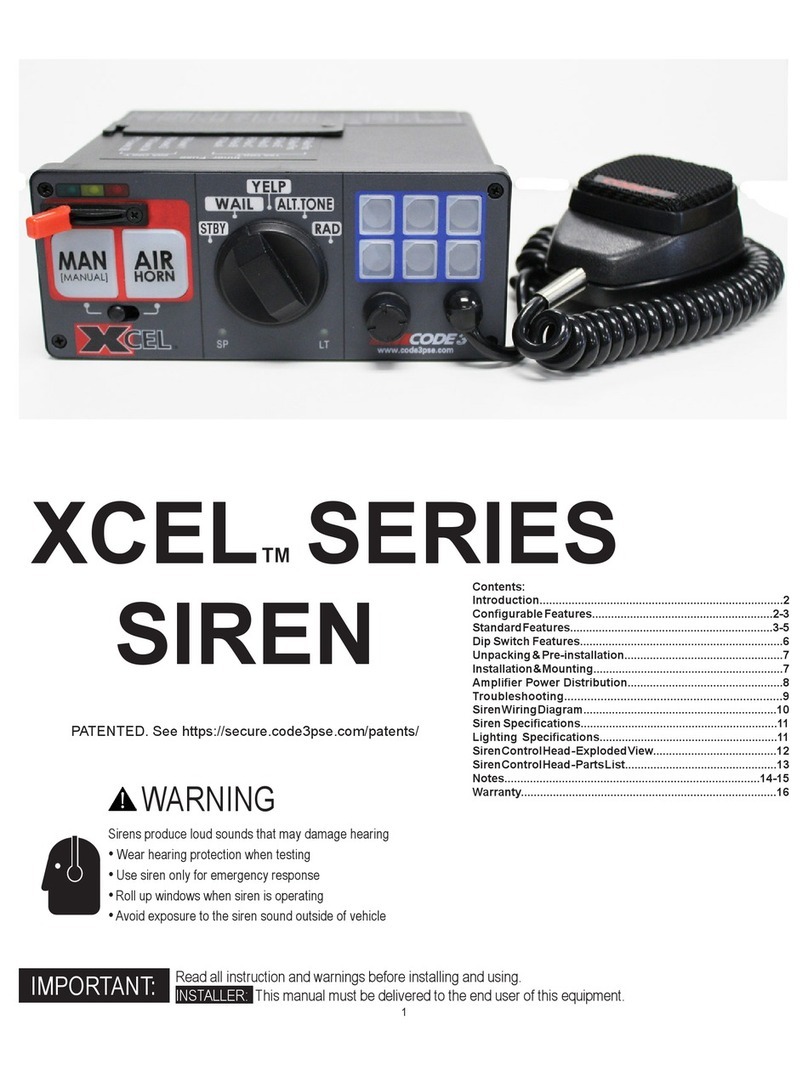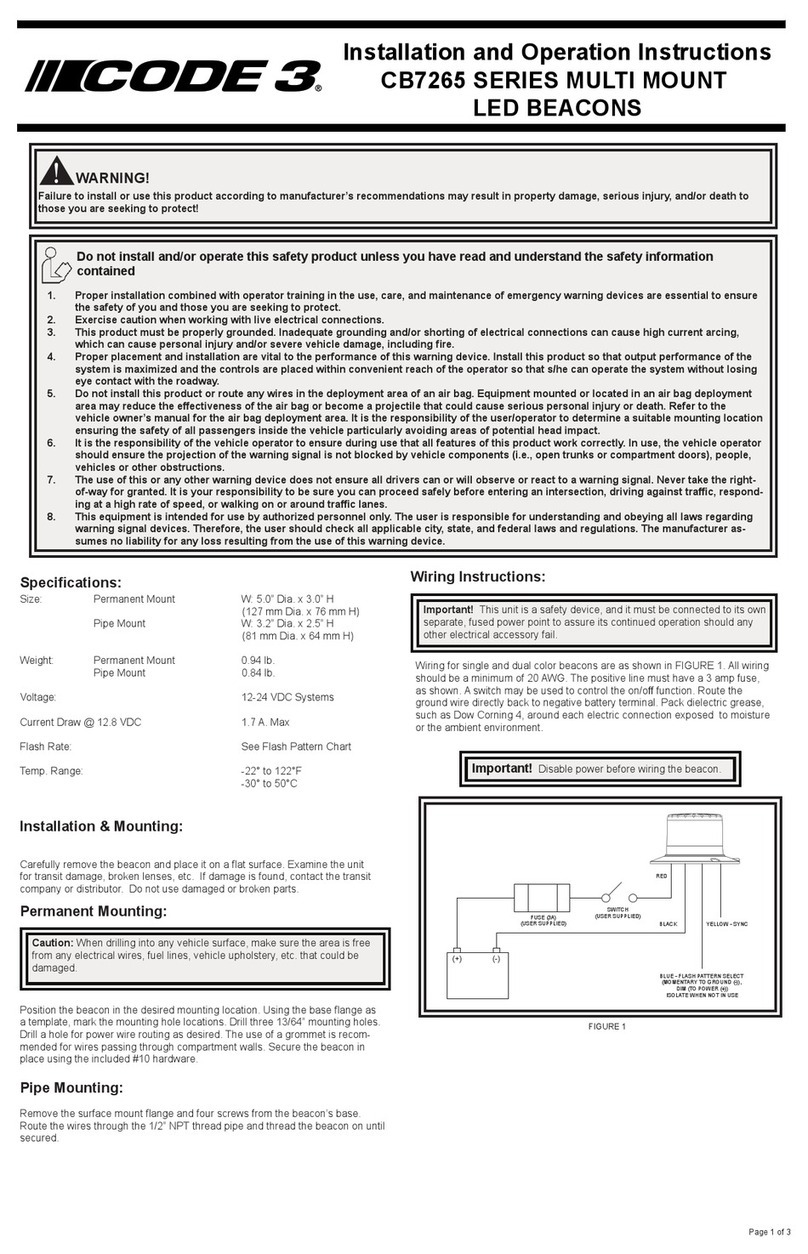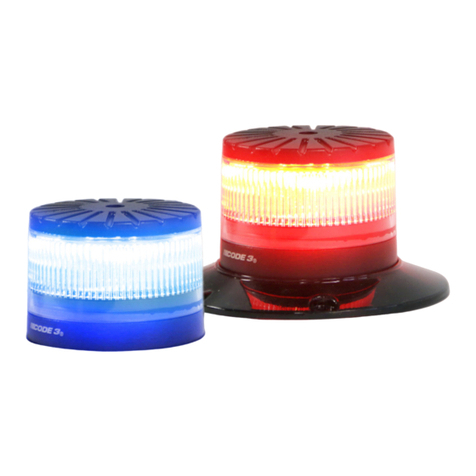
Page 8 of 12
Hand Held Controller (See Picture on Next Page)
1. The microphone for talk.
2. LEV1, when depressed/released once, supplies power to the load connected to LEV1. This will also shut off the siren if EU Lock Level
2 or 3, or Auto Siren is enabled. When depressed/released again, cuts power to Terminal A and shuts off the siren if EU Lock Level 1 is
enabled.
3. LEV2, when depressed/released once, supplies power to the load connected to LEV1 and LEV2. This will also shut off the siren if EU Lock
Level 3 or Auto Siren is enabled. When pressed/released again, cuts power to LEV2 and shuts off the siren if EU Lock Level 2 is enabled.
4. LEV3, when depressed/released once, supplies power to the load connected to LEV1, LEV2, LEV3. If Auto Siren is enabled, then SIR1
siren will also turn on. When depressed/released again, cuts power to LEV1, LEV2, and LEV3, and shuts off the siren if EU Lock or Auto
Siren is enabled.
5. AUX 1 – Auxiliary, when depressed/released once, supplies power to the load connected to AUX1.
6. AUX 2 – Auxiliary, when depressed/released once, supplies power to the load connected to AUX2.
7. AUX 3 – Auxiliary, when active, supplies power to the load connected to AUX3. Active mode is determined by the mode that AUX 3 is set
to. This is set by Dip switch #3.
8. AUX 4 – Auxiliary, when active, supplies power to the load connected to AUX4. Active mode is determined by the mode that AUX 4 is set
to. This is set by Dip switch #5.
9. RAD – When pressed, the radio rebroadcast function over-rides any active siren tone. When the RAD button is released, the siren will
automatically switch back to the siren tone (if any) that was active when the button was pressed.
10. MAN – When depressed/released once, the siren will produce the Manual tone. This button over-rides any other siren tone being pro-
duced. If EU Lock is enabled, and the minimum Light Level is not currently on, then that Light Level will also turn on.
11. AIR – When depressed/released once, the siren will produce the Air Horn tone. This button over-rides any other siren tone being pro-
duced. When the STBY button is depressed/held, the Air Horn button can be depressed/released to select higher or lower pitch tones.
Once the desired tone is chosen, release both buttons.
12. SIR – When depressed/released, the siren will produce the Wail tone. Continue to depress/release the button to scroll through the following
tones (unless disabled): Wail, Yelp, Hi-Lo, Hyper-Yelp, Hyper-Lo, and Whoop. If EU Lock is enabled, and the minimum Light Level is not
currently on, then that Light Level will also turn on.
13. SIR1 – Siren Tone 1, when depressed/released once, the siren will produce the tone preset at the factory (currently Wail). If EU Lock is
enabled, and the minimum Light Level is not currently on, then that Light Level will also turn on. To change the factory preset, depress
and hold the STBY button, and then depress/release the SIR1 button to go to the next available tone. Once the desired tone is chosen,
release both buttons.
14. SIR2 – Siren Tone 2, when depressed/released once, the siren will produce the tone preset at the factory (currently Yelp). If EU Lock is
enabled, and the minimum Light Level is not currently on, then that Light Level will also turn on. To change the factory preset, depress
and hold the STBY button, and then depress/release the SIR2 button to go to the next available tone. Once the desired tone is chosen,
release both buttons.
15. STBY – When depressed/released, any active siren tone is shut off. When depressed/held for 5 or more seconds without any other button
press, the keypad dimming mode is entered (see the section titled “Keypad Backlighting Dimming and Shut Off”). In addition this button
is used to change the siren presets as described above.
16. PTT (Push To Talk) – The PA portion of the siren is activated each time the Microphone PTT button is pressed. When pressed, the PA
function over-rides any active siren tone and routes the PA audio through the siren speaker. When the PTT button is released, the siren
will automatically switch back to the siren tone (if any) that was active when the button was pressed.
17. Power/Volume Control - On/Off power is controlled by adjusting the wheel all the way upward, which turns the unit on and sets it to maxi-
mum volume. Scrolling downward from here decreases the volume. Scrolling further, past the physical detent, will turn the unit off.































